Gelato vs Ice Cream: What’s the Difference & Why It Matters?

Gelato vs Ice Cream: What’s the Difference & Why It Matters?
Whether it’s a summer afternoon in Milan or a weekend treat in Manchester, nothing captures the joy of indulgence quite like a scoop of something cold and sweet. But when it comes to choosing between gelato and ice cream, many are left wondering – what’s the real difference? At San Carlo, where passion for Italian cuisine runs deep, we believe that understanding the craft behind your dessert makes it all the more delightful. So let’s break down the key differences between gelato and ice cream – and why you’ll always find us reaching for the Italian classic.

What is gelato?
Gelato is Italy’s answer to ice cream – but it’s more than just a translation. Made with a higher proportion of milk to cream, gelato contains less fat than traditional ice cream. It’s also churned at a slower speed, which incorporates less air, resulting in a texture that’s denser, silkier and far more intense in flavour.
At San Carlo, we serve artisan gelato that reflects the traditions of the Italian gelatieri – smooth, rich and created with ingredients sourced for their authenticity and taste.
What is ice cream?
Ice cream, as we know it in the UK and US, typically contains a higher butterfat content – sometimes up to 20%. It’s churned faster, which means more air is whipped into the mixture. This results in a lighter texture but often dulls the intensity of flavour.
It’s cold and creamy, yes, but after you’ve experienced gelato, it can feel a touch heavy and overly sweet.
Gelato vs Ice Cream: 5 Key Differences
When it comes to gelato vs ice cream, here are the 5 standout differences:
1. Fat Content
- Gelato: Lower in fat, typically around 4-8% due to more milk and less cream.
- Ice Cream: Higher fat content, often between 10-20%, using more cream and sometimes egg yolks.
2. Churning Speed
- Gelato: Churned slowly, incorporating less air, which creates a denser, silkier texture.
- Ice Cream: Churned more quickly, adding more air and resulting in a lighter, fluffier consistency.
3. Serving Temperature
- Gelato: Served at a warmer temperature (around -12°C), enhancing its smoothness and flavour.
- Ice Cream: Served colder (around -18°C), which can make it firmer and slightly dull the taste.
4. Flavour Intensity
- Gelato: Richer and more pronounced flavours, as the lower fat content doesn’t mask the ingredients.
- Ice Cream: Creamier but often milder in taste due to the higher fat content.
5. Texture
- Gelato: Creamy, dense and velvety.
- Ice Cream: Light, airy and more prone to forming ice crystals when stored.
Why Italians Prefer Gelato
For Italians food is about flavour, texture and experience – and gelato delivers all three. Served slightly warmer than ice cream, the flavours shine through more clearly, whether you’re enjoying a scoop of pistacchio or nocciola. The lower fat content means you’re tasting more of the pure ingredients, not just cold cream and sugar.
At San Carlo, we believe in keeping traditions alive – and that includes presenting gelato the way it was meant to be enjoyed: crafted daily, served fresh and always savoured.

Best Gelato in Manchester
If you’re looking for a taste of Italy in the heart of Manchester City Centre, why not take a trip Gran Cafe Manchester, our Italian patisserie & cafe located in Selfridges, where you can indulge in some of the best gelato sundaes in all of Manchester. All of our gelatos and sorbets are made in-house, using only the best Italian sourced ingredients.
FAQs: Gelato vs Ice Cream
Is gelato healthier than ice cream?
In many ways, yes. Gelato typically contains less fat than ice cream, as it’s made with more milk and less cream. It also uses fewer egg yolks – sometimes none at all – depending on the recipe. Because it’s churned more slowly and served slightly warmer, it has a denser texture and richer flavour, which often means you feel satisfied with less. That said, both are indulgent treats – best enjoyed in moderation and with pleasure.
Why isn’t gelato sold in most stores?
True artisan gelato is best served fresh and that’s part of its charm. It has a shorter shelf life than ice cream and is typically made in small batches. Because gelato is stored at warmer temperatures, it doesn’t travel well in the deep freeze aisles of supermarkets. That’s why you’ll rarely find authentic gelato on the shelves – it’s meant to be savoured in gelaterias or authentic Italian restaurants, where it’s served at its best.
Do Italians eat ice cream or gelato?
Italians are firmly in the gelato camp. While ice cream is more common in other countries, in Italy, gelato is a part of everyday life – whether it’s a mid-afternoon treat, a post-dinner ritual or a stroll-through-the-piazza indulgence. It’s not just dessert – it’s tradition. And at San Carlo, we’re proud to bring that tradition to the UK with every scoop.
Ready to experience Gelato the San Carlo Way?
Book a table at one of our San Carlo locations and you’ll find handcrafted gelato that’s as authentic as it is irresistible. From classic flavours to seasonal sundae specials, each scoop tells a story of Italian artistry and passion.
Because when it comes to dessert, nothing compares to the real Italian experience.

















